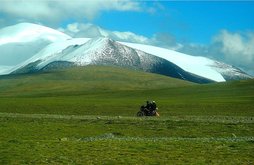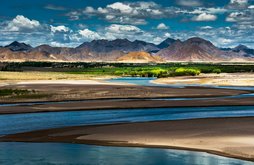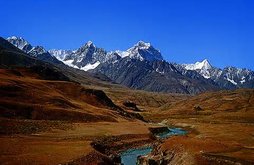
Tibet Autonomous Region lies in the southwest of China and, as Sichuan, forms a part of the Qinghai-Tibet Plateau. Its culture and influence can also be found far beyond the political frontiers, also in Yunnan Province.
According to a myth, the Tibetan people attribute their existence to the union of an ogress and a monkey. Tibet is not only a land of varying landscapes, lush grasslands and sparkling lakes that are a manifestation and embodiment of the true beauty of nature. The various pilgrimage sites, historic monuments and the legends attached to its various natural structures also make for the regular arrival of monks, pilgrims and religious enthusiasts all year round. While there are several mountains in and around Tibet that hold religious significance for people from different beliefs, perhaps the most popular and famous ones include the Mount Kailasha, Kawa Karpo, the Nyainqentanghla Peak and the Mount Haburi. Some of the lakes in Tibet also hold a sacred and holy significance in various religions and thus attract scores of visitors and pilgrims from all over the world. While every lake in the Tibet valley is a work of art in every aspect, the three most acclaimed and holy lakes are the Yamdrok, the Namco and the Mapam Yumco.
Currently we are offering a couple of fixed tours to Tibet. Regulations for visiting permits and itineraries change often, so traveling to Tibet as a visitor from abroad can get troublesome if not properly prepared. Please contact us directly for any support, we are happy to help out!



- 862 reads
